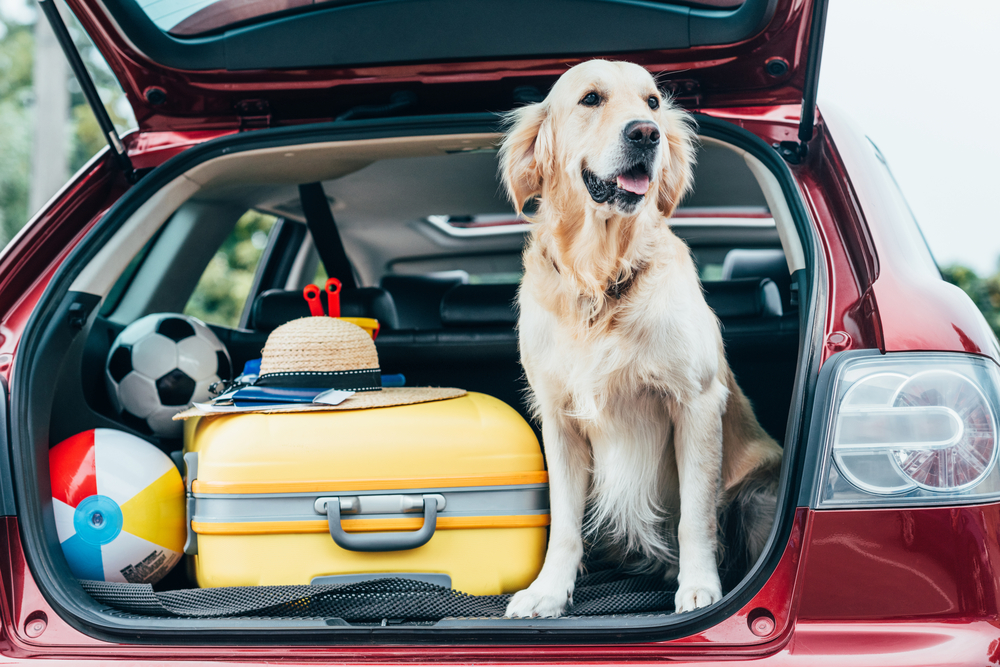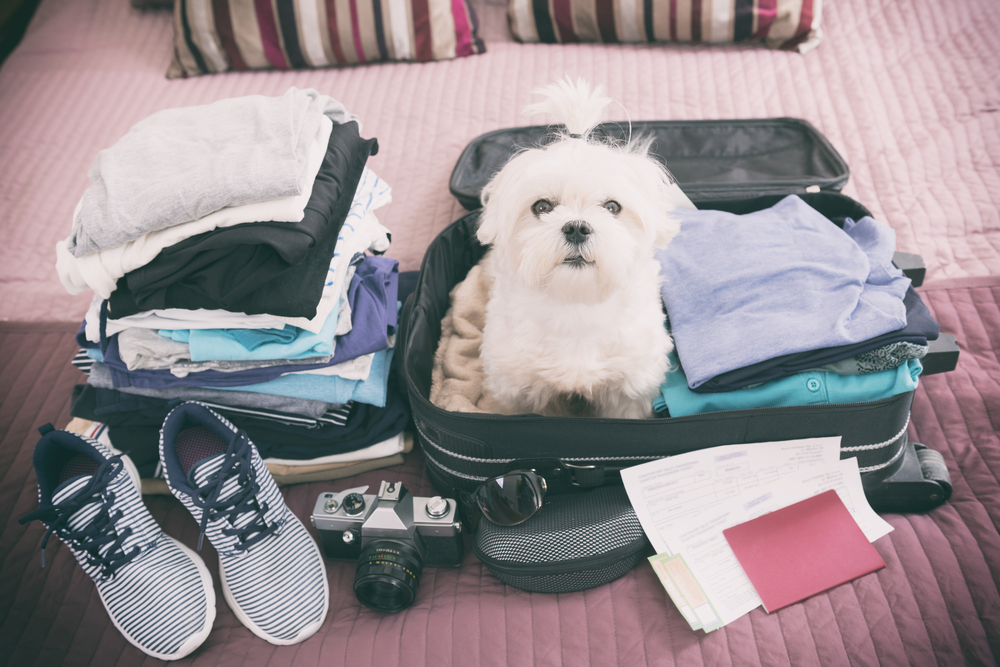Do you have a hard time leaving Rover at home when your family travels? You’re not alone. More than half of animal owners say they plan to travel with pets this year and, with more than 2 million domestic animals traveling on commercial flights every year, the hospitality industry is taking note. More than ever, hotels, beaches, and even restaurants are offering dog-friendly options for their animal-loving customers.
Traveling with your pet can deepen your bond, add a measure of security if you travel alone, and decrease the amount you spend on boarding fees. So, how do you find a pet-friendly place to stay when you’re on the road together? Here are our top tips for finding the best one for you.

Do your homework
Once you’ve picked a destination, look for pet-friendly accommodations in that area.
- Search online. Several sites, including petswelcome.com and dogfriendly.com, identify pet-friendly hotel chains and destinations. If you’re traveling by car, search for pet-friendly hotel chains along your route.
- Check with your travel agent. Some companies, such as AAA, can help you find hotels, campgrounds, attractions, and restaurants that welcome pets.
- Visit the state’s tourism website and search for pet-friendly options. This is also a great way to find other attractions you may want to explore while you’re in the area.
It’s also important to know the difference between pet-friendly and pet-tolerant so you can search for the appropriate property. Pet-tolerant hotels may let you keep your pet in your room, while pet-friendly hotels offer a lot more. Extra amenities can include pet food dishes, play areas, and chew toys, with some upscale properties even offering in-room pet massages.
Finally, be specific about what type of pet you have when you’re conducting your online search or talking to your travel agent. Most pet-friendly hotels accommodate only dogs, which may be problematic if your family pet is something other than canine.
Visit the hotel website
Once you’ve identified a few options, visit the hotel website and review their pet policy:
- Is there an additional charge? Some hotel chains, such as La Quinta and Motel 6, don’t charge any additional fees. Others charge a flat fee of between $50 and $100 or daily fees beginning at $10.
- What are the restrictions? Can you bring just the family dog, or are other animals such as cats, rabbits, and reptiles allowed? And what about weight? Is your 80-pound golden retriever as welcome as your 7-pound Yorkie? Are they allowed in common areas, such as the lobby? Are they allowed on the bed in your room?
- Can you leave your pet alone in the room? If you’re planning to take the kids to the amusement park for the day, don’t assume your dog can stay in the room alone. Check to see if you can leave a crated pet alone or if you have to make day care arrangements.
- Are leashes required? While some bed-and-breakfast properties allow dogs to roam freely, other hotel properties may require your pet to be leashed at all times.

Ask questions before you book
Finally, before you book, call the hotel front office to confirm they can accommodate your family. Due to guests with pet dander sensitivities, pets may be confined to a certain floor or block of rooms that may be booked on the dates you want to travel.
If your dog isn’t allowed to stay in the room alone and you can’t take him with you during the day, ask about doggy daycare options in the area. You may need to make a reservation beforehand.
And even though your pit bull is welcome at one hotel chain’s property along the way, make sure he is welcome at the next. While the majority of pet-friendly hotels don’t have breed restrictions, policies vary from property to property.
You’re almost ready to go!
Now that you’ve found the perfect spot for the entire family to stay on your next vacation, it’s time to make a few more decisions:
- Will you take along pet food or save room in the suitcase and buy it at your destination?
- Does your hotel provide a pet bed and food bowls, or do you need to bring your own? You may also want to bring a favorite toy or other familiar item to make your pet feel more comfortable in a strange room at night.
- Are all your excursions along the way pet-friendly, or do you need to make daycare arrangements?
- Make sure your pet is chipped and properly identified before you hit the road. No one ever plans to lose their pet when they’re traveling, but it happens.
When it’s finally time to head out, travel with confidence. Enjoy the quality time you’re spending together and take lots of photos. Years later, you’ll be able to look back with a smile on the memories you captured.


